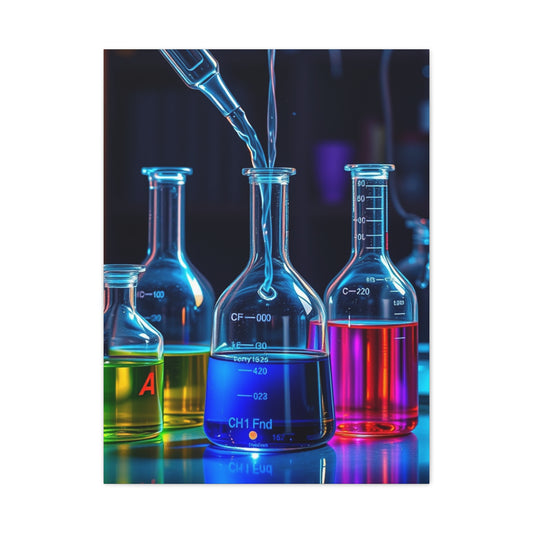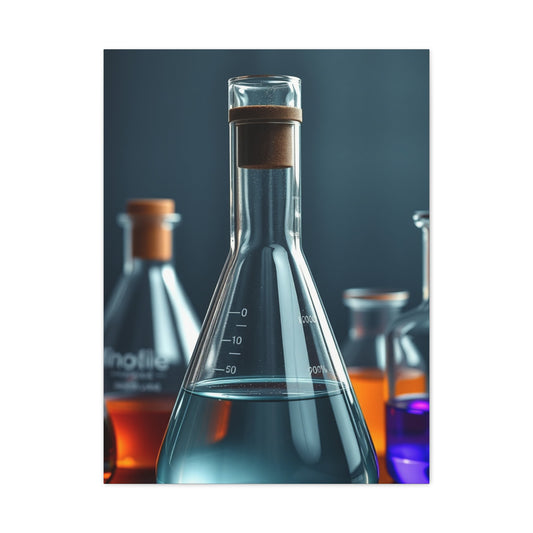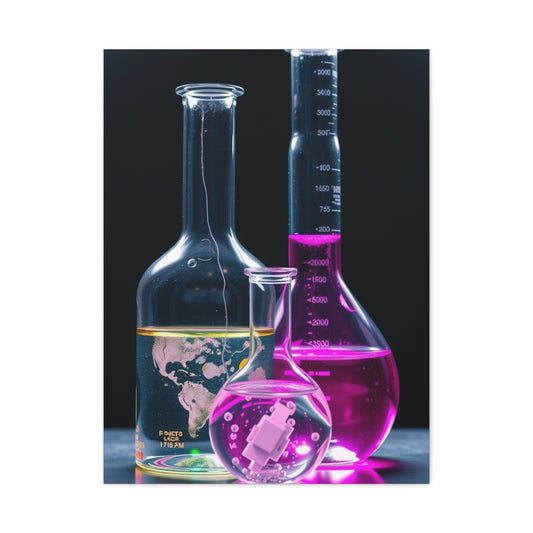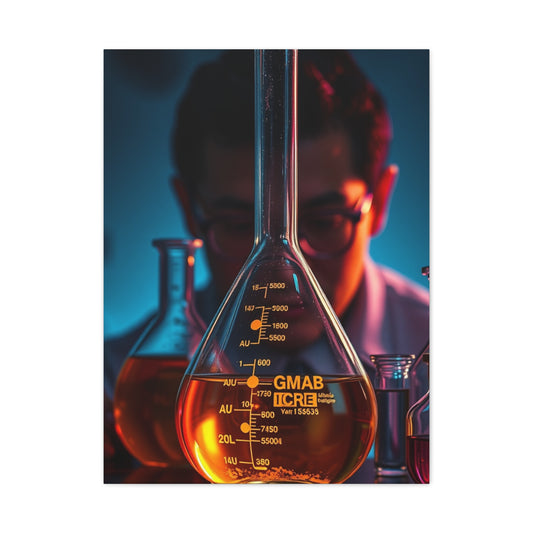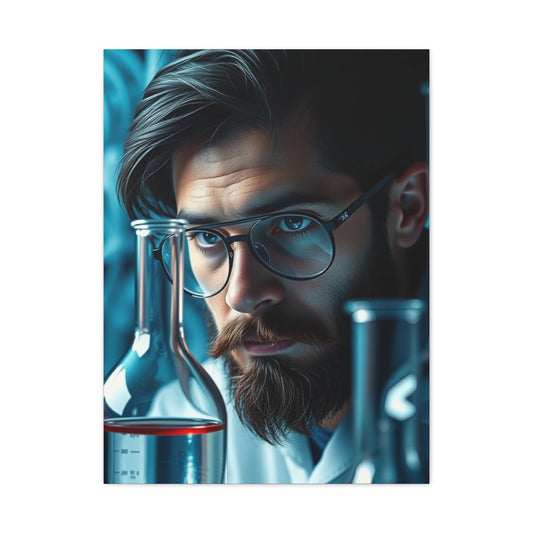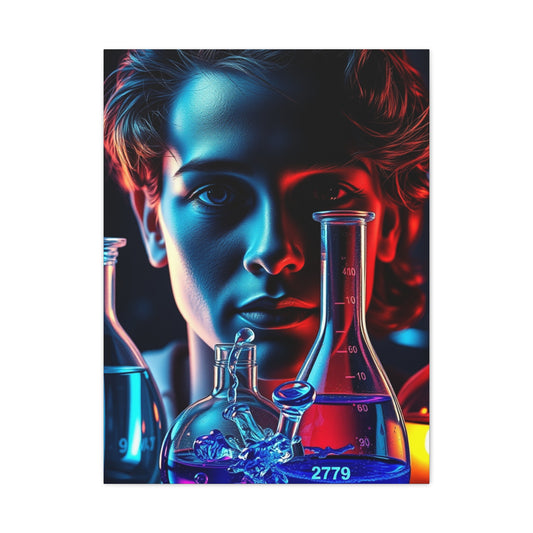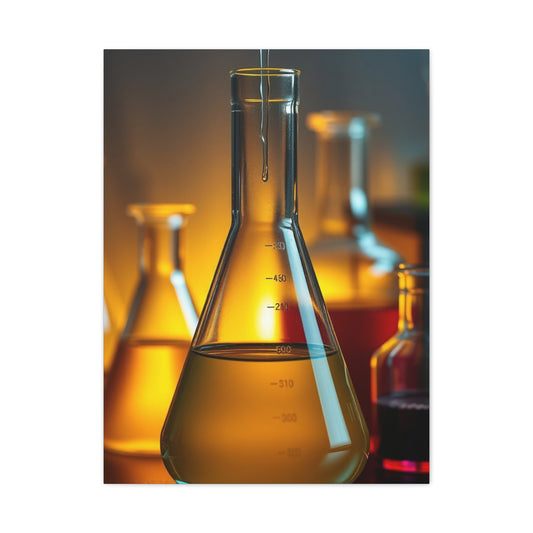-
Chemistry Art Refined Canvas Wall Art & Canvas Print
Regular price From $141.23 USDRegular priceUnit price per -
Chemistry Art Supreme Canvas Wall Art & Canvas Print
Regular price From $141.23 USDRegular priceUnit price per -
Chemistry Art Supreme Gallery Wall Art & Canvas Print
Regular price From $141.23 USDRegular priceUnit price per -
Chemistry Art Luxury Canvas Wall Art & Canvas Print
Regular price From $141.23 USDRegular priceUnit price per -
Supreme Chemistry Art Collection Wall Art & Canvas Print
Regular price From $141.23 USDRegular priceUnit price per -
Vision Chemistry Art Art Wall Art & Canvas Print
Regular price From $141.23 USDRegular priceUnit price per -
Elite Chemistry Art Vision Wall Art & Canvas Print
Regular price From $141.23 USDRegular priceUnit price per -
Masterpiece Chemistry Art Vision Wall Art & Canvas Print
Regular price From $141.23 USDRegular priceUnit price per -
Collection Chemistry Art Art Wall Art & Canvas Print
Regular price From $141.23 USDRegular priceUnit price per
Discovering the Allure of Chemistry-Inspired Metal Wall art Décor
The intersection of scientific knowledge and artistic expression has never been more captivating than through the magnificent world of chemistry metal wall art. These extraordinary pieces transcend traditional boundaries between academia and aesthetics, creating stunning visual narratives that celebrate the fundamental building blocks of our universe. When we examine the periodic table through an artistic lens, we uncover a treasure trove of inspiration that transforms sterile scientific data into breathtaking decorative masterpieces.
The fascination with elemental art stems from humanity's eternal quest to understand and beautify our surroundings simultaneously. Chemistry metal wall art represents this perfect marriage, offering homeowners, scientists, students, and art enthusiasts an opportunity to display their passion for discovery while enhancing their living spaces with sophisticated visual elements. These remarkable creations take the systematic arrangement of chemical elements and reimagine them as vibrant, three-dimensional sculptures that command attention and inspire contemplation.
Contemporary metal wall art featuring periodic table designs has revolutionized how we perceive scientific information. Rather than viewing the periodic table as merely a reference tool, these artistic interpretations celebrate each element as a unique contributor to the cosmic symphony. The metallic medium itself pays homage to the very subject matter it represents, creating an authentic connection between form and function that resonates with viewers on multiple levels.
The Captivating Science Behind Periodic Table Artistry
The periodic table serves as one of science's most elegant organizational systems, representing centuries of human discovery and understanding. When transformed into metal wall art, this systematic arrangement becomes a visual feast that celebrates scientific achievement while providing aesthetic pleasure. Each element possesses its own character, properties, and story, which skilled artisans translate into unique colors, textures, and patterns within their metallic creations.
The genius of Dmitri Mendeleev's original periodic arrangement lies not only in its scientific accuracy but also in its inherent visual rhythm and balance. Artists working with chemistry-themed metal wall art recognize these natural patterns and amplify them through creative interpretation. The result is artwork that maintains scientific integrity while achieving stunning visual impact through carefully orchestrated color schemes, dimensional variations, and surface treatments.
Modern interpretations of periodic table metal wall art often incorporate contemporary design principles while respecting the fundamental structure that makes the table so scientifically valuable. Artists may emphasize certain element groups through color coordination, highlight transition metals with special finishes, or create flowing patterns that guide the eye through different periods and families. This thoughtful approach ensures that each piece serves both as accurate scientific reference and compelling artistic statement.
The symbolic power of individual elements adds another layer of meaning to chemistry metal wall art. Gold represents prosperity and permanence, copper suggests conductivity and warmth, silver embodies purity and reflection, while iron symbolizes strength and durability. When these elemental associations combine within a single artistic piece, they create rich metaphorical narratives that speak to viewers on both intellectual and emotional levels.
Craftsmanship Excellence in Metal Wall Art Creation
The creation of exceptional chemistry metal wall art requires masterful understanding of both scientific principles and artistic techniques. Skilled craftspeople must possess deep knowledge of metallurgy, color theory, surface treatment methods, and dimensional design principles to produce pieces that accurately represent elemental properties while achieving visual excellence. The manufacturing process typically involves multiple stages, each requiring precision and attention to detail.
Initial design phases involve careful study of periodic table organization and elemental properties. Artisans research atomic structures, electron configurations, and chemical behaviors to inform their creative decisions. This scientific foundation ensures that artistic choices remain rooted in authentic elemental characteristics, creating pieces that educate while they beautify.
Material selection plays a crucial role in achieving both durability and aesthetic appeal. High-grade aluminum, stainless steel, and specialty alloys provide the strength necessary for long-term display while offering surfaces receptive to various finishing techniques. The choice of base metal often reflects the scientific theme, with some artists deliberately selecting materials that correspond to elements featured prominently in their designs.
Surface preparation involves meticulous cleaning, smoothing, and priming procedures that ensure optimal adhesion for subsequent treatments. Advanced preparation techniques may include chemical etching, mechanical texturing, or specialized coating applications that enhance both appearance and longevity. These preparatory steps significantly impact the final product's visual quality and resistance to environmental factors.
Color application represents one of the most critical phases in chemistry metal wall art creation. Professional-grade paints, powder coatings, and specialized finishes must withstand temperature fluctuations, humidity variations, and ultraviolet exposure while maintaining their vibrant appearance over extended periods. Many artists employ layered color techniques that create depth and dimension, mimicking the complex nature of atomic structures and chemical interactions.
Design Variations and Artistic Interpretations
The versatility of chemistry metal wall art manifests through countless design variations, each offering unique perspectives on periodic table representation. Traditional approaches maintain the familiar grid structure while introducing artistic elements through color gradients, dimensional variations, and surface textures. These classic interpretations appeal to viewers who appreciate both scientific accuracy and subtle artistic enhancement.
Abstract interpretations push creative boundaries by deconstructing the traditional periodic table format and reconstructing it through innovative artistic vision. These pieces may feature flowing curves instead of rigid rectangles, create three-dimensional landscapes that represent elemental relationships, or employ unconventional color schemes that emphasize emotional rather than literal connections between elements.
Minimalist designs focus on essential elements, creating clean, sophisticated presentations that integrate seamlessly with contemporary interior design schemes. These streamlined interpretations often feature monochromatic color palettes, geometric precision, and subtle dimensional variations that create visual interest without overwhelming surrounding décor elements.
Maximalist approaches embrace complexity and visual richness, incorporating intricate details, bold color combinations, and dramatic dimensional contrasts. These elaborate pieces serve as commanding focal points that dominate their display spaces while providing endless opportunities for detailed examination and discovery.
Themed variations explore specific aspects of chemistry or elemental properties through focused artistic interpretation. Some pieces emphasize transition metals, others highlight noble gases, while additional variations might focus on elements crucial to biological processes or industrial applications. These specialized approaches appeal to viewers with particular scientific interests or professional connections to specific chemical fields.
Color Theory and Visual Impact in Elemental Art
Color selection in chemistry metal wall art extends far beyond mere aesthetic preference, incorporating scientific principles and psychological associations that enhance both visual impact and educational value. Professional artists working in this medium understand how color choices can communicate elemental properties, create emotional responses, and establish visual hierarchy within complex compositions.
The visible spectrum itself represents electromagnetic radiation, connecting color theory directly to fundamental physics principles. When artists assign colors to represent different elements, they often consider factors such as flame test colors, characteristic absorption spectra, or oxidation states. These scientific connections create authentic relationships between visual appearance and elemental properties.
Warm colors including reds, oranges, and yellows often represent highly reactive elements, radioactive materials, or elements associated with heat and energy production. These vibrant hues create visual excitement and draw attention to elements with particularly interesting or important properties. The psychological associations of warm colors—energy, passion, excitement—align perfectly with the dynamic nature of reactive elements.
Cool colors such as blues, greens, and purples frequently represent stable elements, noble gases, or materials associated with low temperatures or calm chemical behavior. These soothing hues provide visual balance within compositions while suggesting the peaceful nature of chemically inert elements. The calming psychological effects of cool colors complement the stable characteristics of elements they represent.
Metallic finishes including gold, silver, copper, and bronze create direct visual connections to the metallic elements they represent while adding luxurious aesthetic appeal. These reflective surfaces interact dynamically with ambient lighting, creating visual interest that changes throughout the day as lighting conditions vary. The inherent beauty of metallic finishes enhances the overall sophistication of chemistry wall art pieces.
Gradient transitions between colors can represent periodic trends such as atomic radius changes, ionization energy variations, or electronegativity patterns. These smooth color progressions help viewers visualize abstract concepts while creating visually pleasing compositional flow that guides the eye through different regions of the periodic table.
Interior Design Integration and Spatial Harmony
Successfully incorporating chemistry metal wall art into residential or commercial spaces requires careful consideration of existing décor elements, architectural features, and functional requirements. These scientific art pieces possess unique characteristics that can either harmonize beautifully with surrounding elements or create dramatic focal points that transform entire rooms.
Living room integration often involves positioning chemistry wall art as a conversation piece above seating areas, mantels, or entertainment centers. The vibrant colors and dimensional qualities of these pieces can energize neutral color schemes while providing intellectual sophistication that elevates the overall ambiance. Proper scale selection ensures that artwork complements rather than overwhelms furniture arrangements and architectural proportions.
Home office environments represent natural settings for chemistry metal wall art, where the combination of scientific subject matter and professional aesthetic creates inspiring work atmospheres. These pieces can enhance concentration and creativity while demonstrating intellectual interests and professional credentials. Strategic placement near desks or conference areas maximizes both visual impact and psychological benefits.
Study areas and libraries benefit enormously from chemistry wall art installations that reinforce learning environments while providing visual stimulation. The presence of scientific artwork can inspire students, encourage curiosity, and create positive associations with academic achievement. Proper lighting design enhances both aesthetic appeal and practical functionality for study purposes.
Kitchen and dining room applications leverage the connection between chemistry and culinary arts, celebrating the scientific principles underlying cooking and nutrition. These installations can spark interesting dinner conversations while adding sophisticated artistic elements to spaces often focused primarily on functionality.
Bedroom applications require careful consideration of color psychology and visual intensity. Softer interpretations of chemistry themes may prove more suitable for restful environments, while dramatic pieces might work well as accent features in master suites or guest rooms where visual impact is desired.
Size Considerations and Proportional Relationships
Selecting appropriate dimensions for chemistry metal wall art involves balancing visual impact, spatial constraints, and viewing distance requirements. These scientific art pieces must achieve sufficient presence to command attention and convey their complex subject matter while respecting the scale relationships within their display environments.
Large-scale installations exceeding four feet in width create dramatic focal points suitable for spacious rooms with high ceilings or extensive wall surfaces. These commanding pieces work exceptionally well in great rooms, lobbies, conference rooms, or academic settings where their educational value can be fully appreciated by multiple viewers simultaneously. The increased size allows for greater detail inclusion and enhanced visibility of individual elemental representations.
Medium-sized pieces ranging from two to four feet accommodate most residential applications while maintaining sufficient detail for close examination. These versatile dimensions work well above furniture groupings, in hallways, or as part of gallery wall arrangements. The balanced proportions ensure visibility without overwhelming smaller spaces or competing excessively with surrounding décor elements.
Compact installations under two feet offer flexibility for intimate spaces, apartment living, or multi-piece arrangements. These smaller formats work beautifully in home offices, bedrooms, bathrooms, or as complementary elements within larger artistic compositions. Despite their reduced dimensions, quality compact pieces maintain visual impact through careful attention to detail and color intensity.
Multi-panel installations allow for creative flexibility in accommodating various wall configurations while creating opportunities for dynamic visual storytelling. Sequential panels might represent different periods of the periodic table, explore elemental evolution, or create abstract narratives inspired by chemical processes. These modular approaches offer solutions for challenging architectural features such as corners, alcoves, or interrupted wall surfaces.
Material Quality and Longevity Considerations
The durability and appearance retention of chemistry metal wall art depend heavily upon material quality, manufacturing processes, and environmental protection measures. Superior pieces employ premium materials and advanced finishing techniques that ensure decades of beautiful display while maintaining their educational and aesthetic value.
Substrate materials form the foundation for all subsequent treatments and significantly impact long-term performance. Aircraft-grade aluminum offers excellent corrosion resistance, lightweight properties, and superior surface preparation characteristics. Stainless steel provides exceptional durability and inherent beauty but requires expert handling during manufacturing processes. Specialty alloys may offer specific properties such as magnetic compatibility or enhanced weather resistance for outdoor applications.
Coating systems represent critical factors in achieving both initial beauty and long-term preservation. Powder coating processes create exceptionally durable finishes that resist chipping, fading, and chemical damage while offering extensive color options and surface textures. Liquid paint systems may provide greater flexibility in achieving specific visual effects but require careful selection and application to ensure adequate performance.
Environmental protection considerations become especially important for pieces displayed in challenging conditions such as humid bathrooms, sunny windows, or outdoor locations. UV-resistant formulations prevent color degradation, while moisture barriers protect against corrosion and finish deterioration. Some manufacturers offer specialized treatments for extreme environmental conditions.
Quality control measures during manufacturing ensure consistent results and eliminate defects that could compromise long-term performance. Professional manufacturers employ rigorous inspection procedures, material testing protocols, and finish quality assessments that verify each piece meets established standards before shipment.
Scientific Art in Personal Spaces
The presence of chemical metal wall art within personal living spaces creates psychological impacts that extend far beyond simple aesthetic enhancement. These pieces serve as daily reminders of human scientific achievement, inspire intellectual curiosity, and communicate personal values regarding education, discovery, and rational thinking.
Cognitive stimulation represents one of the most significant psychological benefits of scientific artwork display. The complex visual information contained within periodic table representations engages analytical thinking processes while providing opportunities for learning and reflection. This mental stimulation can enhance cognitive function and support lifelong learning attitudes.
Identity expression through scientific décor communicates intellectual interests, professional affiliations, and personal values to visitors while reinforcing these characteristics for residents. Chemistry wall art can signal appreciation for logic, evidence-based thinking, and systematic approaches to problem-solving. These identity associations can positively influence self-perception and behavioral choices.
Conversation initiation represents a valuable social benefit of distinctive scientific artwork. Unique pieces naturally attract attention and questions, creating opportunities for meaningful discussions about science, art, personal interests, or career experiences. These interactions can deepen relationships and expand social connections.
Motivation and inspiration effects occur when individuals regularly encounter visual reminders of scientific achievement and systematic thinking. Students may feel encouraged to pursue scientific studies, professionals might gain renewed enthusiasm for their work, and general viewers often develop increased appreciation for scientific methods and discoveries.
Stress reduction benefits emerge from the orderly, systematic nature of periodic table representations combined with the calming effects of beautiful artistic presentations. The logical organization and balanced compositions can provide psychological comfort in chaotic environments while the aesthetic beauty promotes relaxation and positive emotional states.
Gift-Giving Potential
Chemistry metal wall art represents exceptional gift options for numerous occasions and recipient categories, combining practical home décor functionality with meaningful personal expression. The unique nature of these pieces ensures memorable gift experiences while their enduring quality provides lasting value appreciation.
Graduation gifts for chemistry students, chemical engineers, or science educators carry special significance by acknowledging academic achievements while providing beautiful reminders of educational accomplishments. These pieces can inspire continued learning and serve as conversation starters in professional environments throughout recipients' careers.
Housewarming presentations offer opportunities to help new homeowners establish distinctive décor themes while sharing in their excitement about new living spaces. Chemistry wall art pieces provide sophisticated alternatives to traditional housewarming gifts while demonstrating thoughtful consideration of recipients' interests and personality characteristics.
Professional recognition gifts acknowledge achievements in scientific fields, teaching excellence, or research accomplishments through meaningful artistic presentations. Colleagues, supervisors, or organizations can express appreciation while providing recipients with beautiful reminders of their professional contributions and expertise.
Holiday gift exchanges benefit from the uniqueness and universality of scientific themes. Chemistry wall art appeals to recipients across age ranges while offering alternatives to conventional holiday décor items. The educational value adds depth to gift-giving experiences beyond simple material exchange.
Anniversary celebrations for science-minded couples can incorporate chemistry themes through wall art selections that represent shared interests, career connections, or intellectual partnerships. These pieces become symbols of relationships built on common values regarding learning, discovery, and rational thinking approaches to life challenges.
Maintenance Requirements and Care Procedures
Preserving the beauty and integrity of chemistry metal wall art requires understanding proper maintenance procedures and implementing appropriate care routines. While quality pieces are designed for minimal maintenance requirements, regular attention ensures optimal appearance and maximum lifespan.
Regular cleaning procedures should employ gentle methods that preserve surface finishes while removing accumulated dust, fingerprints, and environmental contaminants. Microfiber cloths slightly dampened with distilled water prove effective for routine maintenance without introducing scratches or chemical damage. Harsh cleaners, abrasive materials, and excessive moisture should be avoided to prevent finish deterioration.
Periodic inspection identifies potential issues before they become serious problems requiring extensive repair or replacement. Checking mounting hardware ensures secure installation while examining finish conditions reveals early signs of wear, damage, or environmental effects. Prompt attention to minor issues prevents progression to more significant problems.
Environmental monitoring helps identify conditions that might accelerate deterioration or compromise appearance quality. Excessive humidity, direct sunlight exposure, temperature extremes, or chemical exposures from nearby sources can negatively impact metal wall art pieces. Addressing environmental challenges protects investment value while maintaining aesthetic appeal.
Professional restoration services may become necessary for valuable pieces experiencing significant damage or age-related deterioration. Qualified technicians can often restore original beauty through specialized cleaning, surface refinishing, or structural repair procedures. Professional assessment helps determine whether restoration efforts are cost-effective compared to replacement options.
Storage considerations apply when pieces must be temporarily removed for relocation, renovation, or seasonal rotation. Proper packaging materials, climate-controlled environments, and careful handling procedures preserve condition during storage periods while preventing damage from improper storage methods.
Lighting Considerations for Maximum Visual Impact
Effective lighting design significantly enhances the visual appeal and educational value of chemistry metal wall art while protecting against potential damage from inappropriate illumination sources. Understanding lighting principles and selection criteria ensures optimal presentation results.
Natural lighting provides excellent illumination for metal wall art but requires careful consideration of intensity, duration, and UV content. Direct sunlight can cause color fading and temperature-related expansion issues, while diffused natural light enhances colors and surface textures beautifully. Window treatments, positioning adjustments, or protective treatments may be necessary to balance natural light benefits with preservation requirements.
Artificial lighting systems offer complete control over illumination characteristics and timing while providing consistent results regardless of weather or seasonal variations. LED fixtures represent excellent choices due to their low heat output, energy efficiency, color rendering capabilities, and longevity. Proper fixture selection and positioning create dramatic effects while highlighting specific design elements.
Accent lighting techniques can emphasize particular aspects of chemistry wall art pieces while creating visual depth and dimensional interest. Directional spotlights highlight texture variations, grazing light reveals surface irregularities, and color-changing systems can create dynamic presentations for special occasions or mood enhancement.
Task lighting considerations apply when chemistry wall art serves educational purposes in study areas or professional environments. Adequate illumination levels support detailed examination and reading while preventing eye strain during extended viewing sessions. Balanced lighting schemes accommodate both aesthetic presentation and functional requirements.
Dimming capabilities provide flexibility for various activities and occasions while extending fixture lifespans and reducing energy consumption. Programmable systems can create preset lighting scenes optimized for different uses such as entertaining, studying, relaxing, or showcasing artwork during special events.
Cultural and Historical Significance of Elemental Art
The artistic representation of chemical elements connects contemporary décor trends with centuries of human scientific achievement and cultural evolution. Understanding these historical connections adds depth and meaning to chemistry metal wall art while enhancing appreciation for both scientific and artistic accomplishments.
Ancient civilizations recognized and utilized numerous chemical elements without fully understanding their atomic structures or systematic relationships. Artisans working with gold, silver, copper, iron, and other metals created beautiful objects that demonstrated both technical skill and aesthetic sensibility. Modern chemistry wall art continues this tradition by celebrating elemental properties through artistic interpretation.
The development of systematic chemical knowledge during the Enlightenment period established foundations for contemporary scientific understanding while inspiring artistic exploration of natural phenomena. Scientists like Lavoisier, Priestley, and Davy contributed discoveries that expanded human knowledge while providing inspiration for artists interested in natural philosophy and scientific principles.
Mendeleev's periodic table organization represented a revolutionary scientific achievement that revealed underlying patterns and relationships among chemical elements. This systematic approach to elemental classification provided artists with structured frameworks for creative interpretation while ensuring scientific accuracy in their representations.
Industrial revolution impacts on both scientific knowledge and artistic production created conditions favorable for combining technical precision with aesthetic beauty. Mass production techniques made quality materials more accessible while scientific education expansion increased public appreciation for systematic approaches to natural phenomena understanding.
Contemporary scientific advances continue expanding elemental knowledge through particle accelerators, space exploration, and theoretical research. Modern chemistry wall art reflects these ongoing discoveries while paying tribute to historical foundations that made current understanding possible.
Investment Value and Collectibility Factors
High-quality chemistry metal wall art pieces can represent sound investment opportunities while providing immediate aesthetic and educational benefits. Understanding factors that influence long-term value helps collectors and investors make informed purchasing decisions while enjoying beautiful artwork in their personal spaces.
Artist reputation and recognition significantly impact collectibility and value appreciation potential. Established artists with exhibition histories, critical recognition, or specialized expertise in scientific art command higher prices while offering better prospects for future value growth. Emerging artists may present opportunities for early acquisition at favorable prices.
Limited edition pieces and signed works typically appreciate more rapidly than mass-produced items while offering exclusivity that appeals to serious collectors. Production numbers, artist signatures, certificates of authenticity, and documentation of provenance contribute to collectibility and value retention over time.
Material quality and craftsmanship excellence influence both immediate appeal and long-term durability, directly affecting investment potential. Superior materials, advanced manufacturing processes, and attention to detail create pieces that maintain their beauty while withstanding normal display conditions for extended periods.
Market demand factors include growing interest in scientific education, STEAM initiatives in schools, and increasing appreciation for interdisciplinary art forms. These trends suggest favorable conditions for chemistry-themed artwork appreciation while expanding potential markets beyond traditional scientific communities.
Condition preservation through proper care, appropriate display conditions, and professional maintenance when necessary protects investment value while ensuring continued enjoyment. Original packaging, installation hardware, and documentation should be preserved to maintain complete provenance and maximize future value potential.
Home and Professional Settings
Chemistry metal wall art serves valuable teaching functions in both residential and professional environments while making complex scientific concepts more accessible and engaging for learners of all ages. The visual nature of these pieces supports multiple learning styles while creating positive associations with scientific subjects.
Visual learning support helps students who struggle with traditional text-based chemistry instruction by providing colorful, dimensional representations of abstract concepts. The periodic table organization becomes more intuitive when presented through artistic interpretation, while individual elements gain personality through creative color and texture assignments.
Reference functionality allows chemistry wall art to serve practical purposes during study sessions, homework assistance, or professional consultations. Quality pieces maintain scientific accuracy while presenting information in visually appealing formats that encourage frequent reference and familiarity development.
Conversation starters in homes or offices naturally lead to educational discussions about scientific principles, historical discoveries, or contemporary research developments. These informal learning opportunities can spark interest in scientific careers or encourage deeper exploration of chemistry topics through formal education.
Professional credibility enhancement occurs when chemistry wall art displays demonstrate expertise, interests, and commitment to scientific excellence in workplace environments. Clients, colleagues, and visitors may develop increased confidence in professional capabilities when surrounded by evidence of scientific knowledge and appreciation.
Inspiration and motivation effects help maintain enthusiasm for scientific learning and career development through beautiful daily reminders of chemistry's importance and relevance. Students may feel encouraged to persist through challenging coursework while professionals might gain renewed appreciation for their field's significance.
Customization Options and Personalization Possibilities
Many manufacturers and artists offer customization services that allow purchasers to create unique chemistry metal wall art pieces tailored to specific preferences, requirements, or applications. These personalization options enhance both aesthetic appeal and personal significance while ensuring perfect integration with intended display environments.
Color scheme modifications enable coordination with existing décor elements while maintaining scientific accuracy in elemental representations. Custom color palettes can emphasize particular design themes, complement architectural features, or reflect personal preferences while preserving the educational value of periodic table organization.
Size adjustments accommodate specific wall dimensions, furniture relationships, or architectural constraints while optimizing visual impact for intended display locations. Custom sizing ensures perfect proportional relationships while maximizing available space utilization for both aesthetic and functional benefits.
Element emphasis options allow focus on particular chemical families, periods, or individual elements relevant to specific interests, professions, or educational objectives. Chemistry teachers might emphasize elements commonly encountered in laboratory work, while materials scientists could highlight metals crucial to their research areas.
Text additions such as atomic numbers, element names, or chemical symbols can enhance educational value while maintaining artistic beauty. Custom typography selections, language options, or additional scientific information increase functionality for specific educational applications or international markets.
Surface finish variations including texture modifications, patina effects, or specialized coatings create unique aesthetic effects while potentially improving durability or environmental resistance. Custom finishes can coordinate with architectural materials or create distinctive appearances that reflect personal style preferences.
Environmental Impact and Sustainability Considerations
Environmentally conscious consumers increasingly consider sustainability factors when selecting home décor items, making the environmental impact of chemistry metal wall art production and lifecycle important considerations for both manufacturers and purchasers.
Material sourcing practices significantly impact environmental footprints through raw material extraction, transportation requirements, and processing energy consumption. Manufacturers using recycled metals, locally sourced materials, or sustainably produced substrates demonstrate commitment to environmental responsibility while often providing superior quality products.
Manufacturing processes vary considerably in their environmental impact through energy consumption, waste generation, chemical usage, and emissions production. Advanced manufacturing techniques may reduce environmental impact while improving product quality and durability, creating win-win situations for both ecological and consumer benefit.
Packaging and shipping considerations affect total environmental impact through material usage, transportation energy requirements, and waste generation. Minimal packaging designs, recyclable materials, and efficient shipping methods reduce environmental impact while potentially lowering costs for both manufacturers and consumers.
Product longevity represents crucial sustainability factors since durable pieces provide extended service life while reducing replacement frequency and associated environmental impacts. Quality materials, superior manufacturing processes, and proper maintenance support sustainability goals through extended useful life.
End-of-life disposal or recycling options influence total environmental impact over product lifecycles. Metal wall art pieces composed of readily recyclable materials support circular economy principles while reducing landfill waste and conserving natural resources for future production needs.
Professional Installation and Display Techniques
Proper installation techniques ensure both safety and optimal aesthetic presentation while protecting wall surfaces and artwork from damage during mounting procedures. Understanding installation requirements and options helps purchasers achieve professional results while avoiding common mistakes that compromise both appearance and security.
Wall preparation procedures create stable, level mounting surfaces while protecting both wall materials and artwork from installation damage. Stud location, surface cleaning, and hardware selection significantly impact installation success and long-term security of wall-mounted pieces.
Mounting hardware selection depends upon artwork weight, wall construction materials, and anticipated environmental conditions. Professional-grade fasteners, wall anchors, and hanging systems provide security while allowing for easy removal or repositioning when necessary.
Leveling and positioning techniques ensure perfect alignment and spacing while creating visually pleasing arrangements that complement surrounding architectural features and décor elements. Professional installation tools and measurement procedures prevent crooked mounting and spacing irregularities.
Safety considerations include proper ladder usage, electrical safety around lighting fixtures, and protection of surrounding surfaces during installation procedures. Professional installers possess expertise and insurance coverage that may justify their services for valuable or complex installations.
Maintenance access planning ensures that future cleaning, inspection, or removal procedures can be accomplished safely and efficiently without damage to artwork or surrounding surfaces. Proper installation planning anticipates future needs while maximizing current aesthetic impact.
Market Trends and Future Developments
The chemistry metal wall art market continues evolving through changing consumer preferences, advancing manufacturing technologies, and growing appreciation for STEAM education principles. Understanding current trends and future possibilities helps inform purchasing decisions while identifying emerging opportunities.
Design innovation trends include incorporation of interactive elements, LED lighting integration, and smart technology connections that enhance both aesthetic appeal and educational functionality. These advanced features may become standard offerings as technology costs decrease and consumer expectations evolve.
Material advancement research focuses on developing new alloys, surface treatments, and protective coatings that improve durability, reduce environmental impact, and enhance aesthetic possibilities. These material innovations may enable new design approaches while improving product performance and value.
Market expansion indicators suggest growing demand from educational institutions, healthcare facilities, corporate offices, and residential consumers interested in unique décor themes. This expanding market may encourage greater variety in product offerings while potentially reducing costs through increased production volumes.
Manufacturing technology improvements including automated production processes, computer-controlled finishing systems, and quality assurance innovations may enhance product consistency while reducing costs and environmental impact. These technological advances could make high-quality chemistry wall art more accessible to broader consumer markets.
International market development creates opportunities for cultural interpretation variations while expanding global appreciation for scientific art forms. These international perspectives may inspire new design approaches while increasing overall market size and diversity.
Conclusion
The fascinating world of chemistry metal wall art represents a remarkable convergence of scientific knowledge, artistic creativity, and interior design sophistication that transforms ordinary living and working spaces into inspiring environments celebrating human intellectual achievement. These extraordinary pieces accomplish the seemingly impossible task of making complex scientific information both visually stunning and emotionally engaging while maintaining educational value and aesthetic appeal that endures for decades.
Throughout this comprehensive exploration, we have discovered how skilled artisans transform the systematic organization of chemical elements into breathtaking visual narratives that speak to both heart and mind. The meticulous craftsmanship required to create superior chemistry metal wall art ensures that each piece serves as a testament to human dedication to excellence, while the scientific subject matter celebrates our species' relentless curiosity about the fundamental building blocks of existence.
The versatility of chemistry metal wall art in various interior design contexts demonstrates its universal appeal and practical value for homeowners, professionals, educators, and art enthusiasts alike. Whether gracing the walls of contemporary living rooms, inspiring students in academic environments, or enhancing the professional atmosphere of scientific workplaces, these pieces consistently deliver visual impact while fostering intellectual engagement and meaningful conversations.
Investment considerations reveal that quality chemistry metal wall art pieces offer both immediate aesthetic gratification and long-term value appreciation potential, making them wise choices for collectors and investors seeking unique opportunities in the growing market for scientific art. The combination of artistic merit, educational value, and superior materials creates compelling propositions for those who appreciate both beauty and substance in their acquisitions.
The educational benefits of chemistry metal wall art extend far beyond simple decoration, creating daily opportunities for learning, inspiration, and intellectual stimulation that can positively influence academic achievement, career development, and lifelong appreciation for scientific knowledge. These pieces serve as constant reminders of humanity's remarkable progress in understanding our physical world while encouraging continued exploration and discovery.
Environmental considerations in manufacturing and lifecycle management demonstrate the industry's growing commitment to sustainability while ensuring that these beautiful pieces contribute positively to both indoor environments and global ecological well-being. Conscientious consumers can enjoy their chemistry wall art knowing that responsible production practices support their environmental values while delivering superior quality and durability.
The psychological and social benefits of displaying chemistry metal wall art create ripple effects that extend throughout communities, inspiring conversations, encouraging scientific interest, and contributing to broader cultural appreciation for rational thinking and evidence-based understanding of natural phenomena. These positive influences help create more informed, engaged, and scientifically literate societies.
Future developments in chemistry metal wall art promise even greater innovations in design, functionality, and accessibility as advancing technologies and expanding markets create new possibilities for creative expression and educational impact. The continued evolution of this fascinating art form ensures that future generations will have even more spectacular options for celebrating the marriage of science and beauty.
As we conclude this extensive examination of chemistry metal wall art, it becomes clear that these remarkable pieces represent far more than simple decorative objects. They embody humanity's greatest aspirations toward knowledge, beauty, and understanding while providing practical solutions for creating inspiring environments that nurture both intellectual growth and aesthetic appreciation.
The decision to incorporate chemistry metal wall art into personal or professional spaces reflects values that prioritize education, creativity, and the celebration of human achievement. These pieces serve as daily reminders that science and art need not exist in separate spheres but can combine synergistically to create experiences that enrich our lives while advancing our understanding of the remarkable universe we inhabit.
Whether you are a dedicated scientist, passionate educator, enthusiastic student, or simply someone who appreciates the intersection of knowledge and beauty, chemistry metal wall art offers unlimited possibilities for personal expression while contributing to the broader cultural celebration of human intellectual achievement. The investment in such pieces represents not only aesthetic enhancement but also participation in the ongoing story of human discovery and the eternal quest to understand and beautify our world through the perfect marriage of science and art.

